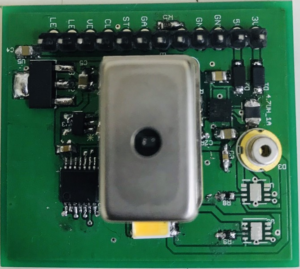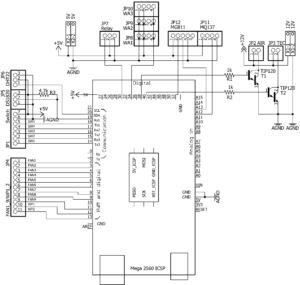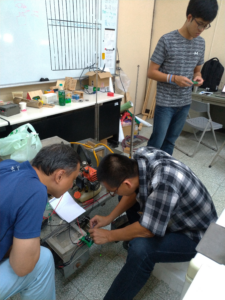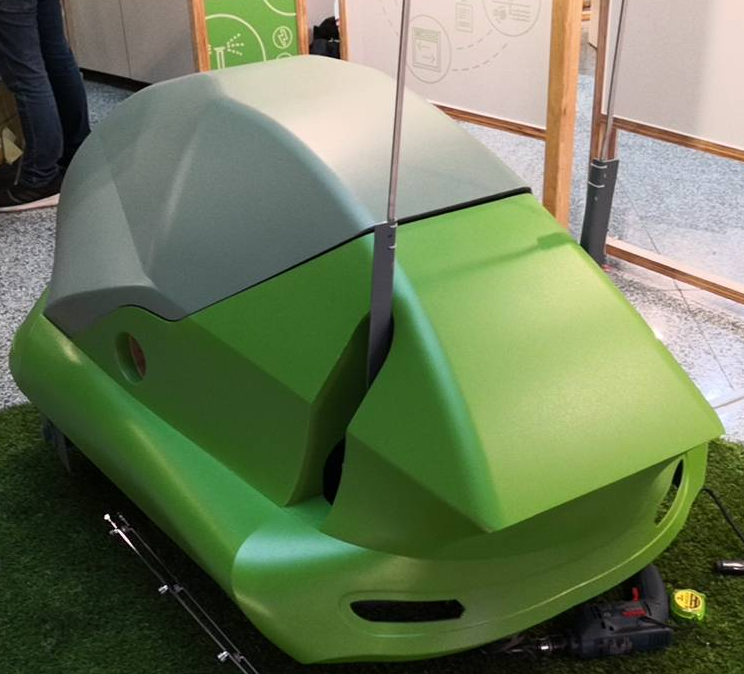- Title of Project:
Development of the Fluorescence Detection Module by Using Micro-spectrometer
Members :
- Department of Biomechatronics Engineering
- Prof. Dr. Jyh Jian Chen
- Graduates, Chun-Yu Pan
Invited International Teacher:
- Department of Physics
- Lecturer, Puchong Kijamnajsuk
- Graduates, Chayanit Thairat
Content of Research or Internship:
The aim of the research is to fabricate a smart fluorescence module to perform the DNA detection. This research continues our research experience and core technology in DNA detection field for the past several years. We combine the precision machining, thermal fluidic and biotechnology to develop smart portable nucleic acid amplification system. Mr. Puchong Kijamnajsuk has an expertise in heat and mass transfer fields. He is familiar with electronic circuit design and microcontroller technology, and owns the experience on a 3D printer and mini CNC. He can achieve the preliminary goal of the design of electric circuit for micro-spectrometer detection during the staying at NPUST.
The current research area of Mr. Puchong Kijamnajsuk is aimed at developing the portable photo-acoustic and photothermal deflection system and active learning by virtual instrumentation for experimental physics. There is a considerable complementarity in the implementation of this research. In particular, the technology of the photothermal system will enhance the innovation of the content of the research. In the future, the design of the thermal control module of this nucleic acid amplification system will be simplified.
Description of Performance:
In this July 2019, NPUST-KU cooperation under UNTA project support has been continued. We have done cooperation in mainly 3 parts of work. All Print Circuit Board (PCB) were designed and developed by freeware software Eagle Cadsoft version 7.7.0 as explaining in detail later.
- The fluorescence detection module for the smart portable nucleic acid amplification system was designed by using the fingertip micro spectrometer (HAMAMUTSU model C12666MA) and the custom-made print circuit board. The module was designed to be used with IoT board LinkIt 7697 (MediaTek Inc.). The spectrometer can measure the visible spectrum wavelength from 320 nm~800 nm. The completed module is shown in Figure 1.
- The PCB design is using for the chicken house model environmental control. We have simplified and designed the print circuit board as a shield board for the Arduino MEGA. This system is able to record the temperature and humidity of the house and also control the temperature by electric fan and water spray into the house. This module also has 2 types of bioactivity gas detection, MG811 CO2 gas sensor and MQ137 NH3 gas sensor. All data information is remotely transferred by 2.4GHz WiFi module to the server for the real-time displaying. The schematic diagram for this module is shown in Figure 2.
- The third research cooperation at NPUST in 2019 is presented. We have fixed and made a remote control fertilizer spray car with a GPS tracking system. The system is composed of 2 parts. Firstly, the remote control is designed to be interfaced with Arduino NANO due to the small size, light weight and low power consumption. The remote control needs to receive many button commands and transmit the text command to the car receiver. The format of text command is “TN” where “T” is a single character for the command and “N” is a single integer for the state of the command. For example, “R1” means to set the motor for the right wheel at stage 1 speed and “R0” means to set the motor for the right wheel at stage 0 speed or stop. Using this text command protocol, the communication will be very effective and fast due to a short ASCII text command communicated between the sender (remote control set) and the receiver. The schematic and the PCB for remote control part are shown in Figure 3.
- The second part of the car spraying the system has 3 sub modules, including the RF receiver, motor control and data acquisition system. All modules are connected to the Arduino MEGA which has many I/O ports and is possible to expand the system in the future if needed. The car modules are shown in Figure 4.
Photos





